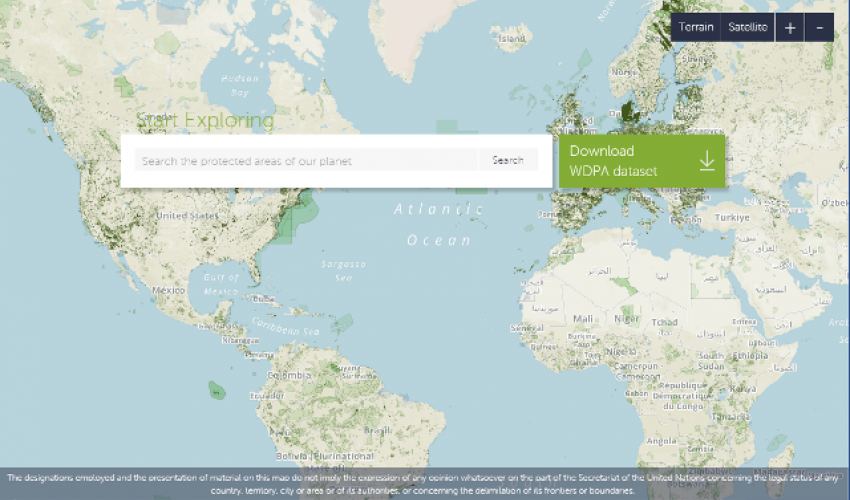Protected Planet is an online platform where users can access statistics and download data on protected areas for information-based decision making, policy development, and business and conservation planning. It’s managed by the United Nations Environment Programme’s World Conservation Monitoring Centre (UNEP-WCMC) with support from IUCN and its World Commission on Protected Areas (WCPA).
Protected Planet is a publicly available online platform where users can discover terrestrial and marine protected areas, access related statistics and download data from the World Database on Protected Areas (WDPA). Protected Planet is the most up to date and complete source of information on protected areas, updated monthly with submissions from governments, non-governmental organizations, landowners and communities.
Protected Planet enables a spectrum of users to use existing protected area data for information-based decision making, policy development, and business and conservation planning. Businesses in a range of sectors including mining, oil and gas, and finance can use WDPA data to identify biodiversity risks and opportunities of a given project. Conservation planners can use the information to predict the outcomes of various proposals and focus on initiatives and areas that are most likely to result in positive impacts. The US Agency for International Development (USAID) uses the Millennium Challenge Corporation’s (MCC) annual policy performance scorecards to inform decisions on allocations on funds; MCC uses the WDPA in its indicator to measure the effectiveness of policies related to Natural Resource Protection.
In addition to serving as a business, conservation and aid investment planning tool, Protected Planet provides the basis for monitoring and reporting on progress towards international environmental targets such as the Aichi Biodiversity Targets and the 2030 Sustainable Development Goals. Every two years, UNEP-WCMC releases the Protected Planet Report on the status of the world’s protected areas and recommendations on how to meet international goals and targets.
To make the database more accessible and user-friendly, in 2015 the United Nations Environment Programme's World Conservation Monitoring Centre (UNEP-WCMC) made some improvements to the online platform, including streamlining the download process and making improvements to the search function. Now, users can access statistics and other information on specific countries, and compare between countries. The website improvements have led to an eight-fold increase in the number of dataset downloads from the site, from 6,000 in 2014 to 47,348 in 2015.
The upcoming IUCN World Conservation Congress 2016 is an important opportunity to build on important outcomes of the 2014 IUCN World Parks Congress, and reflect on progress and next steps towards achieving Aichi Biodiversity Target #11, which commits countries to increasing the global coverage of protected areas to at least 17 per cent of terrestrial areas, and 10 per cent of coastal and marine areas by 2020.
The upcoming Protected Planet report will be launched at the IUCN World Conservation Congress 2016.












